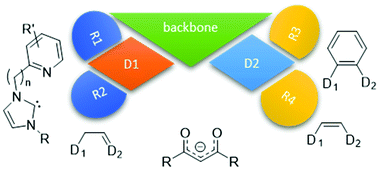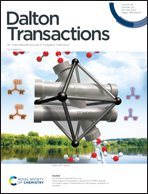Mapping the properties of bidentate ligands with calculated descriptors (LKB-bid)†
Abstract
We have extended the Ligand Knowledge Base (LKB) approach to consider a broad range of bidentate ligands, varying donors, substituents and backbones, which gives rise to a diverse set of 224 ligands in a new database, LKB-bid. Using a subset of steric and electronic parameters described previously for bidentate P,P-donor ligands (LKB-PP), here this approach has been applied to a wider set of bidentate ligands, to explore how these modifications affect the properties of organometallic complexes. The resulting database has been processed with Principal Component Analysis (PCA), generating a “map” of ligand space which highlights the contribution of donor atoms and bridge length to the variation in ligand properties. This mapping of bidentate ligand space with DFT-calculated steric and electronic parameters has demonstrated that the properties of ligands with different donor atoms can be captured within a single computational approach, providing both an overview of ligand space and scope for the more detailed investigation and comparison of different ligand classes.



 Please wait while we load your content...
Please wait while we load your content...